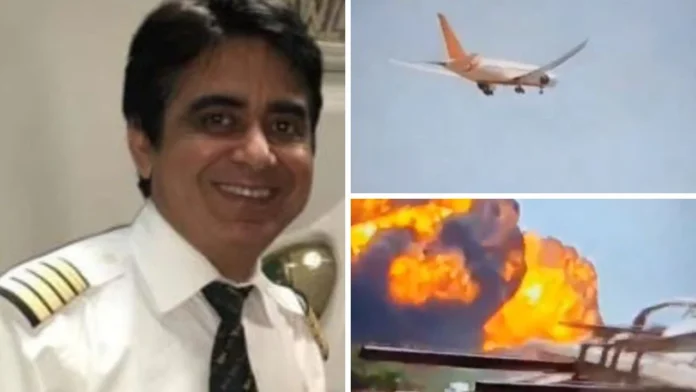Decoding Captain Sumeet Sabharwal’s Chilling “Mayday” Syntax — The Most Mysterious Detail in the Ahmedabad Tragedy
By The Evening Sentinel | Aviation Incident Desk
One of the most haunting elements from the recent Air India Flight 171 disaster is the urgent and peculiar phrasing used by Captain Sumeet Sabharwal during his final mayday call — a detail experts say may unlock crucial insights into the pilot’s final moments in the cockpit.
🗣️ “Thrust Not Achieved… Falling… Mayday!”
According to official transcripts, mere seconds after take-off, Sabharwal’s voice crackled over the radio:
“Thrust not achieved… falling… Mayday! Mayday! Mayday!”
timesofindia.indiatimes.com
This fragmented message—an incomplete sentence followed by the internationally recognised distress call—was repeated three times, suggesting both technical failure and urgent alarm. Authorities confirmed it came just 36 seconds after takeoff, at about 625 ft, and immediately preceded a crash that claimed 279 lives
theguardian.com
.
⚠️ What Does His Syntax Reveal?
Aviation analysts believe the structure reveals key clues:
“Thrust not achieved” indicates rapid engine failure—possibly dual-engine shutdown—preventing ascent
“Falling” confirms the aircraft had already begun descending uncontrollably.
His abrupt shift to repeated “Mayday” flags distress, foreshortened by imminent impact.
One expert explained that this combination of diagnostic alert + situational awareness + urgency is highly unusual—and emotionally revealing in its brevity
🕵️♂️ A Trigger Point for Investigation
Investigators have seized upon this phrasing. The Ram Air Turbine (RAT) was confirmed deployed during the emergency—pointing to critical power loss—as evidenced in newly released crash footage
thescottishsun.co.uk
.
Officials are examining whether Sabharwal’s wording could correlate with sudden engine or electrical failure at low altitude—1,000–2,000 ft heights—so existential in nature that even skilled pilots like Sabharwal had no choice but to broadcast this cautionary displacement.
😢 A Heroic Figure in the Chaos
In retrospect, his choice of words implies measured professionalism instead of panicked exclamation. Friends and colleagues described him posthumously as a pilot who moved the aircraft away from a residential building—sacrificing himself to spare many below
🔍 Why This Is the Central Clue
His mayday call is now central to reconstructing the incident timeline:
It suggests engine failure occurred within 30–40 seconds after takeoff.
It confirms rapid descent was underway.
Its coherence in dire circumstances shows Sabharwal retained composure.
First responder and blackout recorder analysis over the coming months may tie this syntax to exact control settings, engine data, and cockpit warnings.
🧭 What Happens Next
Black box analysis, understood to be underway, will correlate cockpit audio with flight dynamics.
Indian and UK aviation agencies are reconstructing data to map precise failure points
Interim findings are expected within three months, with final reports later forming the basis of major safety recommendations.
📝 Conclusion
Captain Sabharwal's final words—concise, deliberate, and deeply human—are both a distress signal and a testament to professionalism. They are now the lever investigators will use to pry open the sequence of failures, as they work to ensure future flights aren’t claimed by the same shadow.
As his family and nation mourn, the clarity of his owed words may yet illuminate the tragedy—and ensure action replaces loss.
